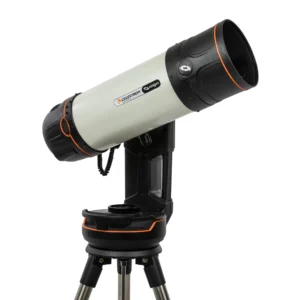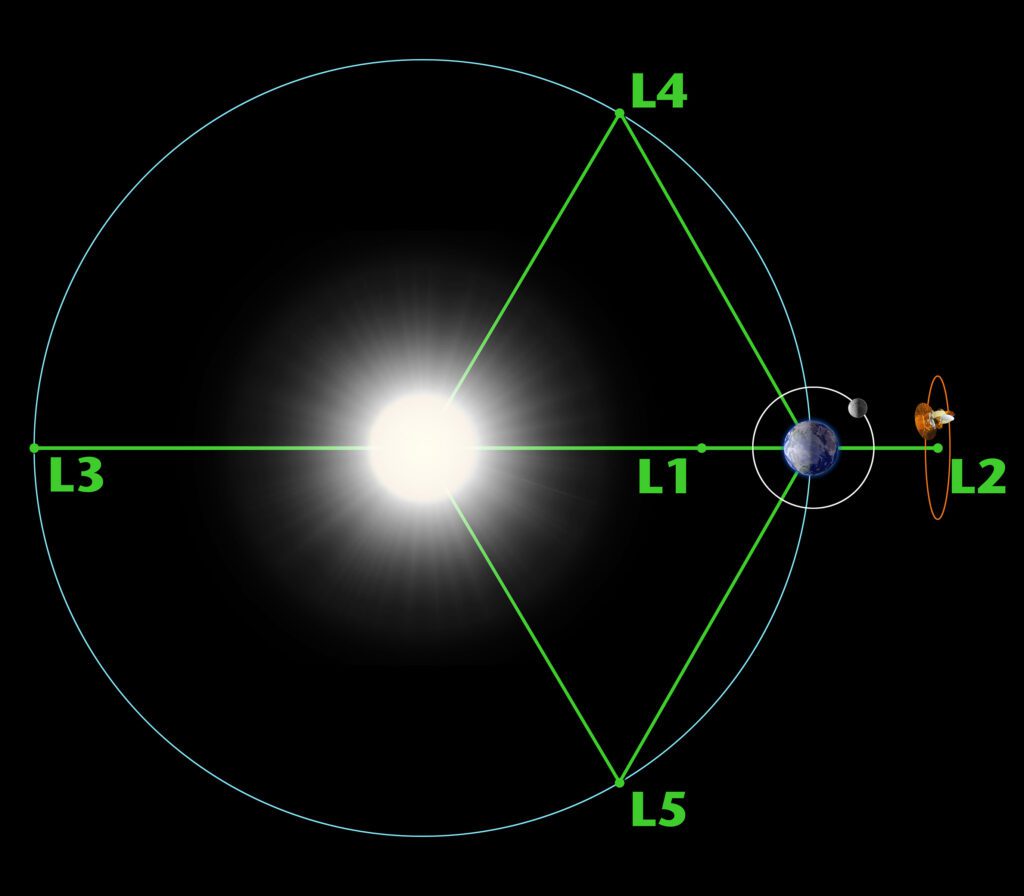
Lagrange points are the points in space where the gravitational force acting on any two bodies is nullified. At the Lagrange point, any object will stay in the same position and will move along with the Earth.
There are in total five Lagrange points, from L1 to L5.
Lagrange point 1 (L1) explained
The L1 point is in between the Earth and the sun. At this point, the sun is exerting gravitational force on the object and pulling it towards itself. The Earth also pulls the same object towards itself, so any object on L1 will stay in the same position and revolve around the sun with the Earth.
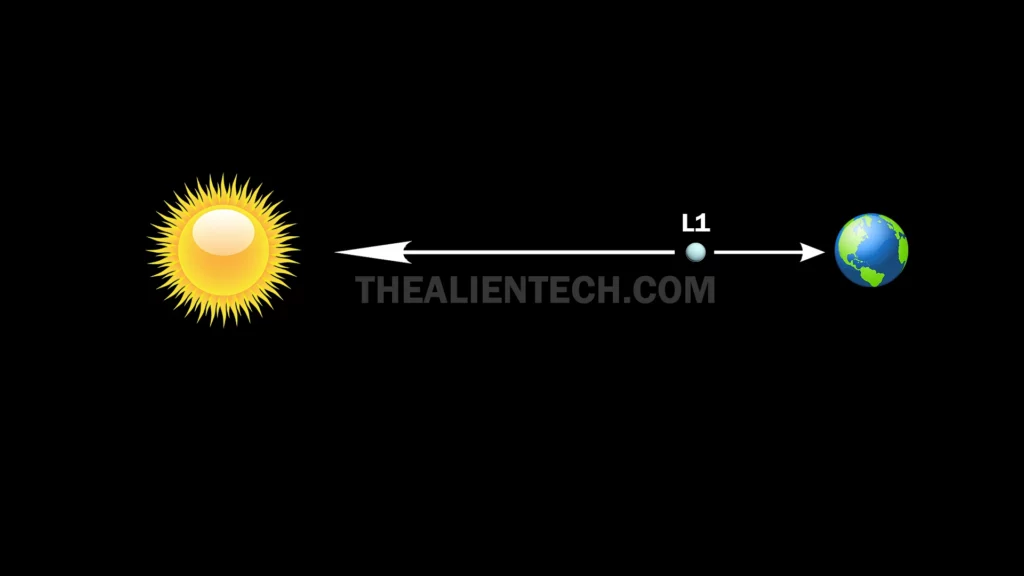
Lagrange point 2 (L2) explained
The L2 point is after the earth. At this point, the sun is also exerting its gravitational pull and pulling the object towards itself. At the same time, the Earth is also exerting its gravitational pull toward itself. So both objects pull the objects at L2 towards themselves. So because of this, the object will stay in the same position and will revolve around the sun with the Earth.
Most space telescopes are preferred to be at the L2 point, as there is the earth between them and the sun. So this will lead to better observation and collecting a lot of light from their targets.
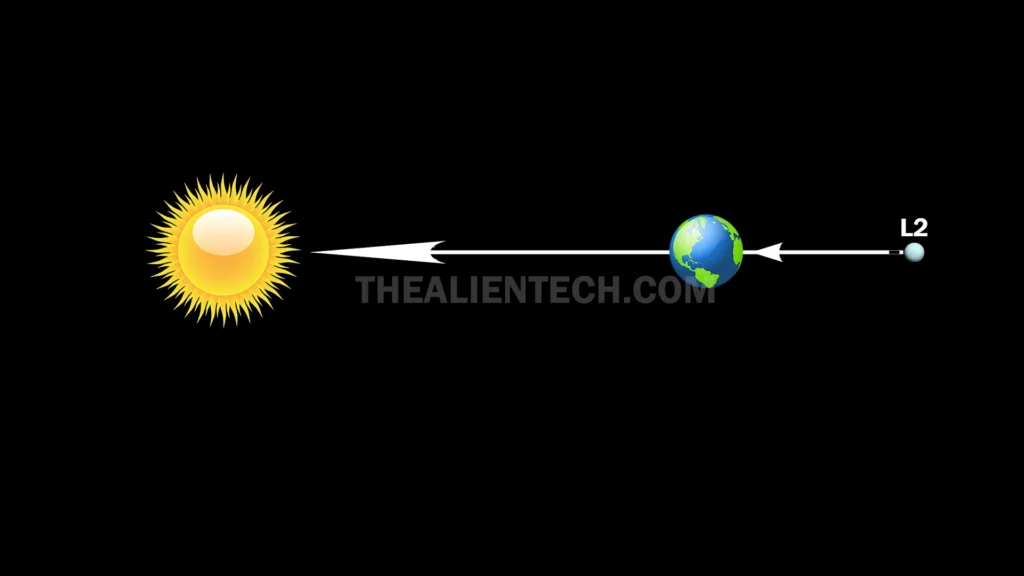
Lagrange point 3 (L3) explained
The L3 is behind the sun. It is not primarily considered useful for deploying a space telescope because it is on the opposite side of the earth from the sun. Even if the space telescope is deployed there, it will be difficult to send information to the Earth because the Earth and the telescope will not synchronize with their positions. So using L3 is not an option for anything anytime soon.
One use of L3 can be that it can observe the sun from the other side and send information to Earth in advance about any solar eruption from that side.
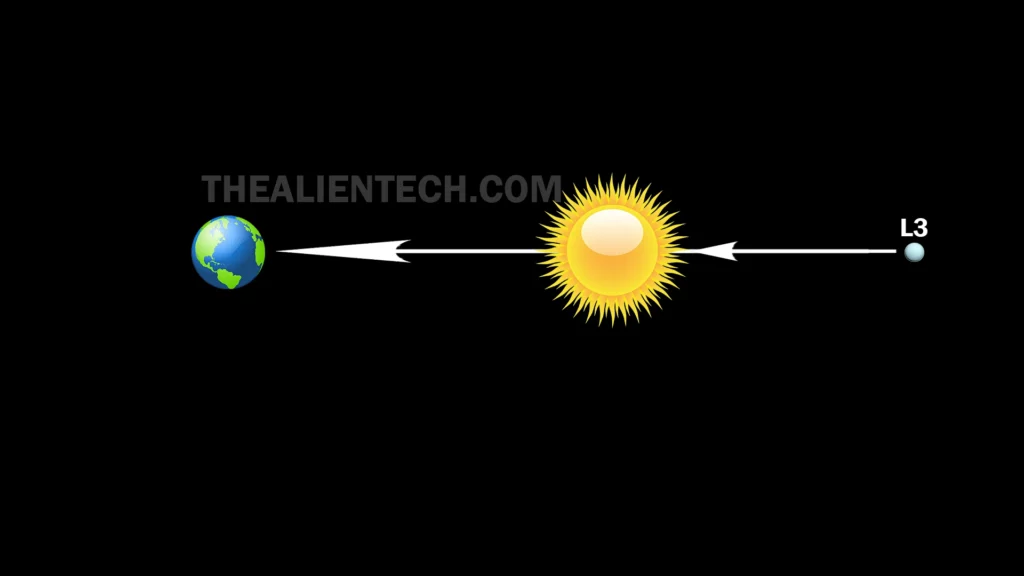
Lagrange point 4 (L4) explained
The L4 point is at 60 degrees from both the sun and the Earth. At this point, the sun is exerting its gravitational pull toward it. The earth is also pulling it towards itself. Though the Earth’s gravitational pull is slightly weaker than the sun’s. The Earth is not exactly revolving around the sun but around an imaginary point just outside the sun.
The L4 is always ahead of the earth. And any object that is in the L4 will stay there forever revolving around the sun with the earth.
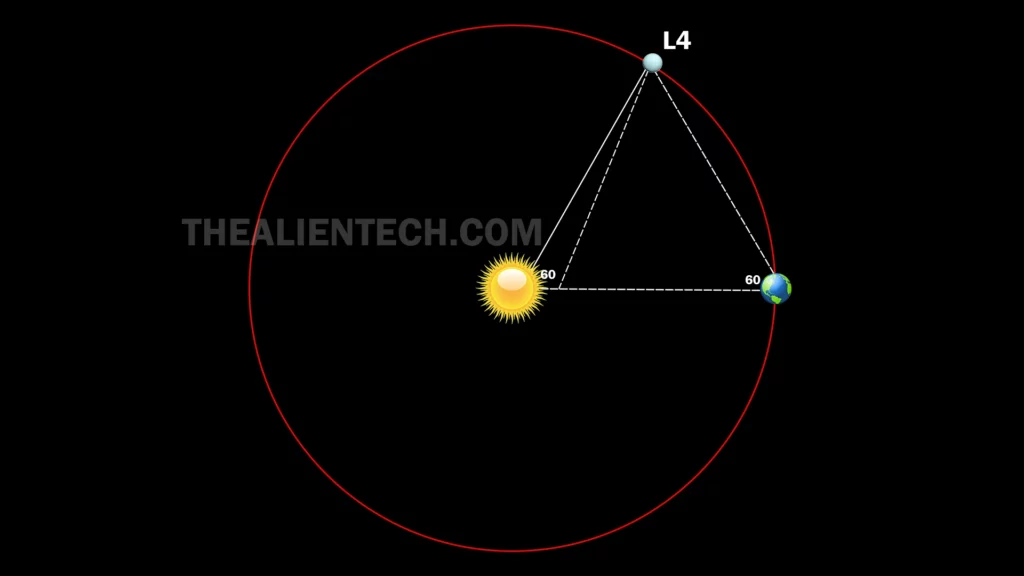
Lagrange point 5 (L5) explained
The L5 point is also at 60 degrees from both the sun and the Earth. At this point, the sun is exerting a gravitational pull, and the earth is also pulling it towards itself. Here also, the earth’s gravitational pull is weaker than that of the sun. The L5 is also not exactly revolving around the center of the sun but at the same imaginary point outside the sun.
The L5 is always behind the earth. And any object that gets to L5 will stay there forever, revolving around the sun with Earth.
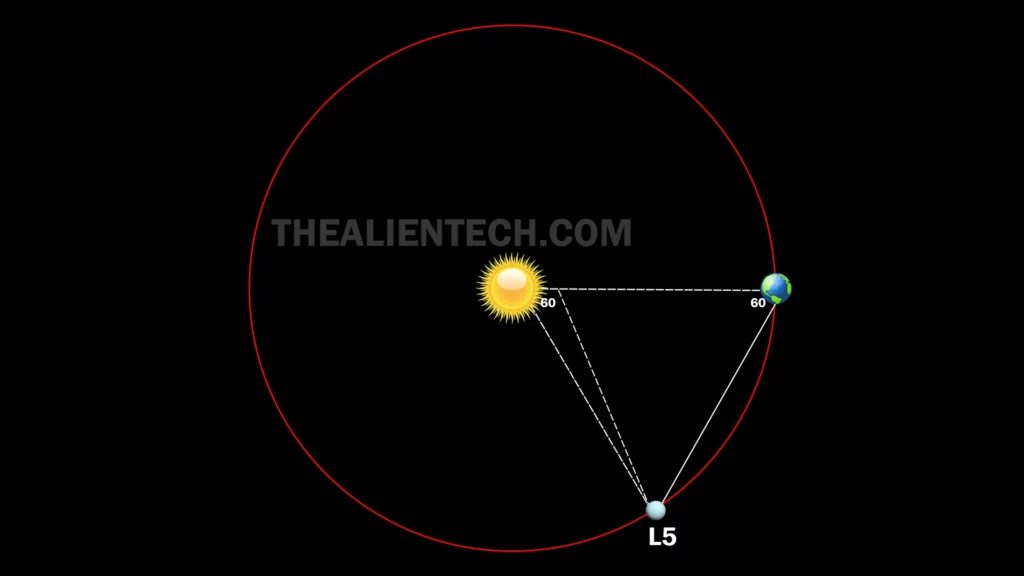
Conclusion
From these five Lagrange points, L1 to L5, L1, L2, and L3 are the unstable points. As these points are unstable, if a space telescope is deployed at these points, it is not always steady. Instead, it is in a circular motion, and the telescope needs constant course correction to keep them on these points.
However, L4 and L5 are stable points. Any object that is at these points will stay there forever. Many times, at L4 and L5, many small asteroids will get stuck in those positions. Jupiter’s L4 and L5 have so many asteroids stuck in them that they stay there and keep rotating with Jupiter around the sun.





